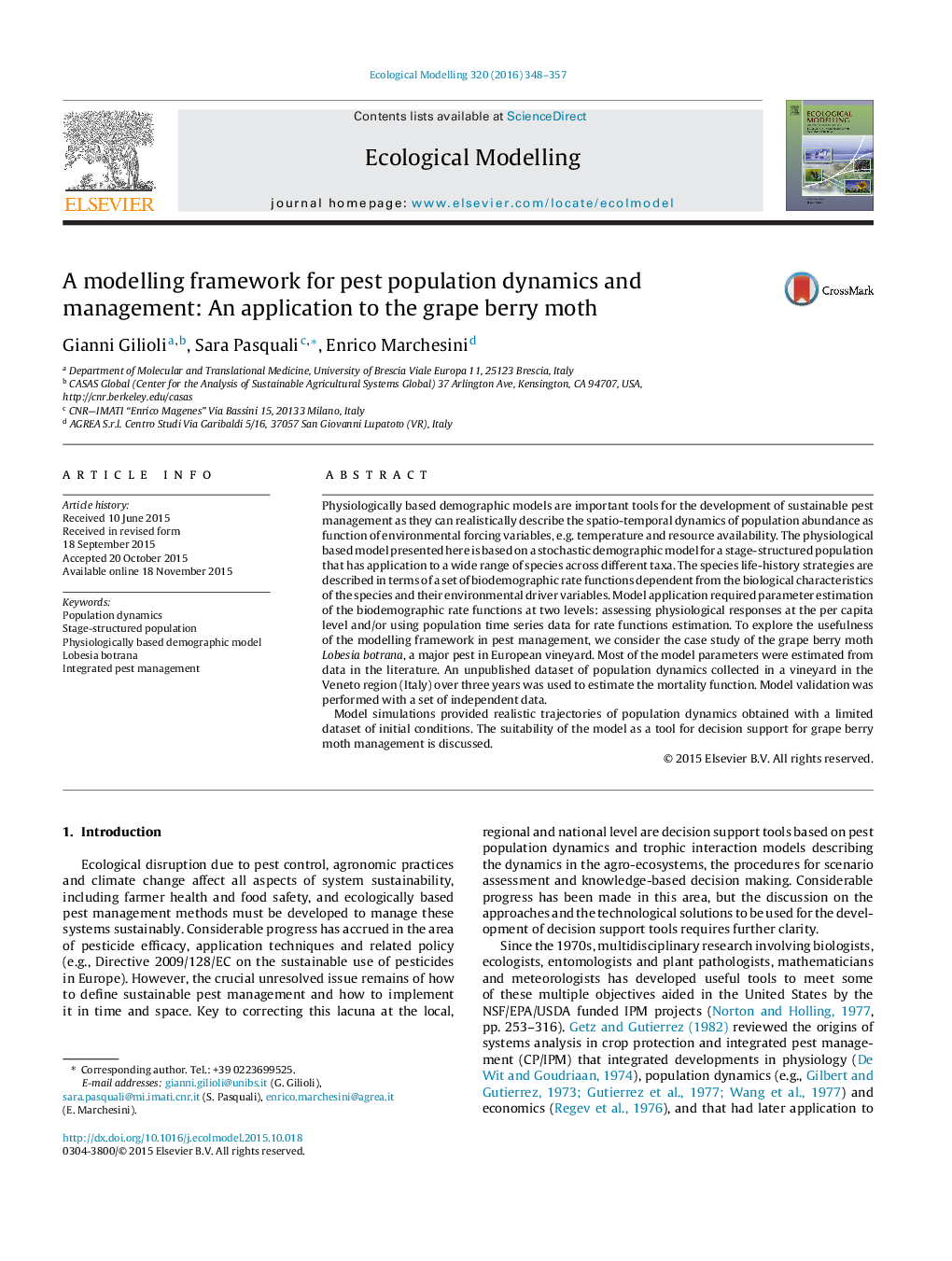| Article ID | Journal | Published Year | Pages | File Type |
|---|---|---|---|---|
| 6296293 | Ecological Modelling | 2016 | 10 Pages |
â¢A physiologically-based demographic modelling framework for pest is presented.â¢Functional forms for biodemographic functions are proposed.â¢An application to the vineyard pest Lobesia botrana is illustrated.â¢A parameters estimation of biodemographic functions for Lobesia botrana is given.â¢Usefulness of the methodology for pest management is stressed.
Physiologically based demographic models are important tools for the development of sustainable pest management as they can realistically describe the spatio-temporal dynamics of population abundance as function of environmental forcing variables, e.g. temperature and resource availability. The physiological based model presented here is based on a stochastic demographic model for a stage-structured population that has application to a wide range of species across different taxa. The species life-history strategies are described in terms of a set of biodemographic rate functions dependent from the biological characteristics of the species and their environmental driver variables. Model application required parameter estimation of the biodemographic rate functions at two levels: assessing physiological responses at the per capita level and/or using population time series data for rate functions estimation. To explore the usefulness of the modelling framework in pest management, we consider the case study of the grape berry moth Lobesia botrana, a major pest in European vineyard. Most of the model parameters were estimated from data in the literature. An unpublished dataset of population dynamics collected in a vineyard in the Veneto region (Italy) over three years was used to estimate the mortality function. Model validation was performed with a set of independent data.Model simulations provided realistic trajectories of population dynamics obtained with a limited dataset of initial conditions. The suitability of the model as a tool for decision support for grape berry moth management is discussed.
